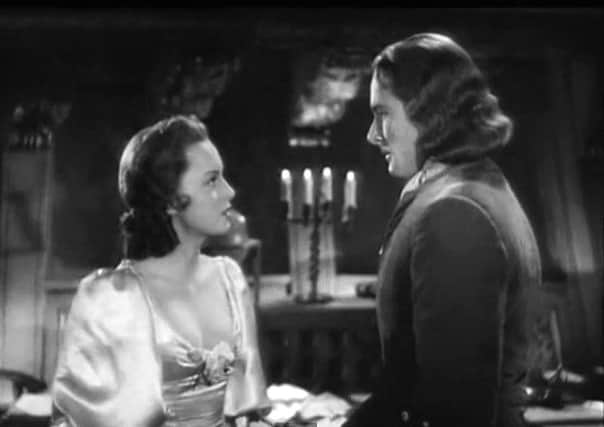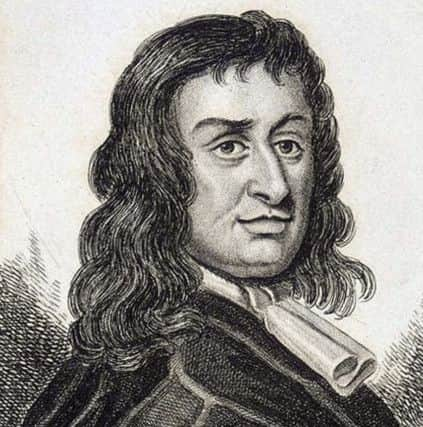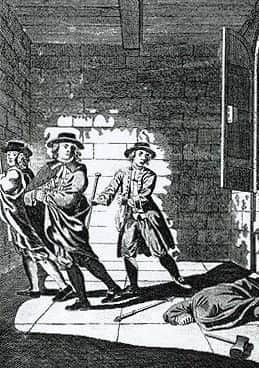Famous fictional pirate based on Irish double agent who stole Crown Jewels


Flynn’s father, biologist and embryologist Theodore Flynn MBE, was Professor of biology at Queen’s University from 1931 to 1948 and the Professor named a new species of sub-tropical kelpfish – Gibbonsia erroli – after his son.
Amongst some of Mitchell’s colourful anecdotes about the swashbuckler film star were references to his occasional visits to Belfast, with the qualification “the question of whether Errol Flynn ever set foot in Ireland has never been satisfactorily answered”.
Advertisement
Hide AdAdvertisement
Hide AdIan Rippey, Secretary of the Co Armagh Wildlife Society, reckons that Flynn definitely visited Belfast, and has information about a positive sighting.


And Mr Rippey’s letter ended with an intriguing postscript: “Captain Thomas Blood…had Irish Presbyterian if not Ulster connections.”
But first, Ian explained why he’s sure that Flynn came to Belfast.
“A Miss Rene Liggett of Armagh informed me a good few years ago that she remembered seeing Errol Flynn at Queen’s University, Belfast, when she was a student. I assume that she studied biology under Errol Flynn’s father...I knew Miss Liggett from when I joined the Armagh Field Naturalists Society (now the Co Armagh Wildlife Society) in 1974 until her death. I don’t know whether Miss Liggett saw Errol Flynn only once or on a number of occasions. All she said was that she had seen him…Miss Liggett died in a nursing home some years ago.”
Advertisement
Hide AdAdvertisement
Hide AdFlynn’s iconic film role, with co-star Olivia de Havilland, was based in part on a fictional character from the 1922 novel Captain Blood written by Rafael Sabatini.


Blood was best known “for his short-lived theft and subsequent pardon of the Crown Jewels,” Ian explained in his letter to Roamer, adding, “please feel free to pass on Captain Blood’s Irish connection although I am sure many are aware of it”.
According to the Co Clare Library History Thomas Blood was born around 1618 in Co Clare.
Some sources say his father was a Presbyterian ironmaster or blacksmith with substantial land in Clare, Meath and Wicklow.
Advertisement
Hide AdAdvertisement
Hide AdYoung Thomas spent most of his early life in England and in 1648 he married Maria Holcroft in Lancashire.


He returned to Ireland as an officer in the Cromwellian army where he received grants of land in lieu of payment for army service.
These services are thought to have involved espionage during the English Civil War.
In 1660 when the monarchy was restored, Colonel Blood, as he liked to be known, lost all his lands. In revenge in 1663 he conspired to capture James Butler, the Duke of Ormond – the Lord Lieutenant of Ireland, based at Dublin Castle.
Advertisement
Hide AdAdvertisement
Hide AdThe disguised Colonel Blood, aided by accomplices, tried to force his way into the castle but his plot had been discovered. Most of the gang were arrested but Blood, variously disguised as a Quaker and priest, escaped to Holland, with a price on his head in England.


Thomas was a hugely mysterious character, linked to various dissident groups hostile to the government while also involved closely with government.
It is thought that he worked as a double agent, playing both sides against the other.
He was involved in plots and daring escapades and was regularly on the run, often using assumed names and disguises, but in 1671 came the most famous of Blood’s adventures – the stealing of the Crown Jewels from the Tower of London, mentioned in Ian Rippey’s letter.
Advertisement
Hide AdAdvertisement
Hide AdBlood first went to the tower disguised as a parson, where he gained the confidence of Talbot Edwards, the tower’s keeper, and promised to arrange a marriage between his imaginary nephew and Edwards’ daughter.
Blood and his accomplices became well acquainted with the security arrangements.
On 9 May 1671 the daring plan went into action.
Blood persuaded Edwards to show the Crown Jewels to his friends.
Blood’s gang bound and gagged the tower’s terrified keeper and attempted to get away with the jewels but Edwards raised the alarm.
Advertisement
Hide AdAdvertisement
Hide AdThe thieves were captured and the Crown Jewels were recovered, slightly damaged and with a few diamonds missing.
Blood was reported to have said: “It was a gallant attempt, however unsuccessful! It was for a crown!”
Blood was imprisoned in the tower on sentence of death and refused to speak to anyone except the king.
King Charles agreed to see him at Whitehall and asked him: “What if I should give you your life?”
Advertisement
Hide AdAdvertisement
Hide AdBlood replied with an answer that has often been quoted in history books: “I would endeavour to deserve it, Sire!”
On 18 July 1671 Thomas Blood was released from his prison cell.
His treasonable act should have led to his death but he found favour with King Charles and had his Irish estates restored to him.
Not only that, he was granted an annual pension of some £500.
Advertisement
Hide AdAdvertisement
Hide AdThe mystery remains as to what Colonel Blood had done to gain the King’s pardon never mind pension.
It’s presumed that he must have served Charles rather well as a double agent and this was his reward.
Colonel Blood died in his London home on 24th August 1680 and was buried in Christchurch Gardens near St James’s Park.
His reputation for trickery was such that his body was later exhumed by the authorities to verify that he had died.